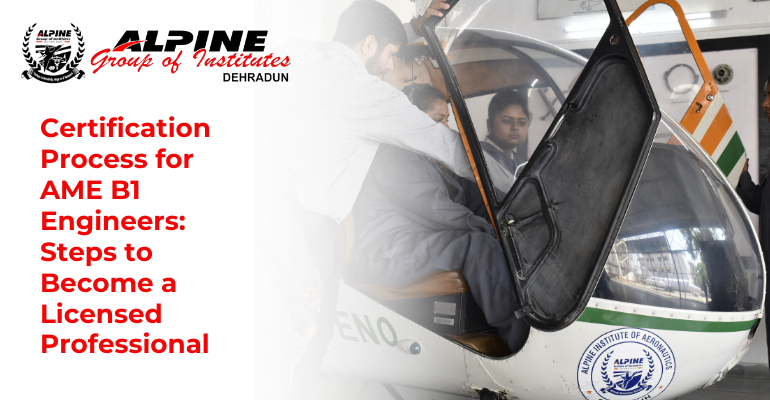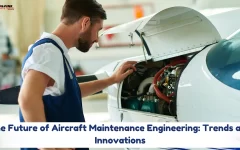Certification Process for AME B1 Engineers: Steps to Become a Licensed Professional
2024-12-20 12:11Certification Process for AME B1 Engineers: Steps to Become a Licensed Professional

Certification Process for AME B1 Engineers: Steps to Become a Licensed Professional
Becoming a licensed Aircraft Maintenance Engineer (AME) in the B1 category is a prestigious and rewarding career path. As an AME B1 engineer, you’ll be responsible for ensuring the airworthiness of aircraft by maintaining and repairing their mechanical systems, airframes, and engines. But before you can start working in this critical role, you must complete a rigorous certification process.
What is the AME B1 Certification?
The AME B1 certification (often governed by regulatory bodies like EASA in Europe, or FAA in the United States) certifies that an engineer is qualified to carry out maintenance on specific aircraft types, focusing on the mechanical systems and airframes. The B1 category specifically covers aeroplane mechanics, including turbine and piston engines. Obtaining an AME B1 license is essential for pursuing a career in aircraft maintenance, and the certification process ensures that you are qualified to meet the high safety standards required in the aviation industry.
Step-by-Step Guide to the AME B1 Certification Process
1. Meet the Basic Eligibility Criteria
Before you can begin the certification process, you must first meet the basic eligibility requirements. These typically include:
- Age: You must be at least 18 years old.
- Educational Qualifications: A high school diploma or equivalent with strong knowledge in mathematics, physics, and English (as English is the global language of aviation).
- Medical Fitness: A medical examination is required to ensure that you are fit to perform the duties of an AME. This may include eye tests, hearing tests, and general physical assessments.
2. Complete an Accredited AME B1 Training Program
Once you meet the basic eligibility criteria, the next step is to complete an accredited AME B1 training course. This training program is essential to give you both the theoretical knowledge and practical experience needed to work as an aircraft maintenance engineer. The curriculum generally includes the following:
- General Aircraft Knowledge: Study of aircraft systems, structures, materials, and operations.
- Aerodynamics and Flight Mechanics: Understanding of flight dynamics and the principles of aircraft control and performance.
- Aircraft Engines: Detailed study of turbine and piston engines, their components, and maintenance procedures.
- Electrical and Avionics Systems: Although the focus is on mechanical systems, knowledge of aircraft electrical and avionics systems is also essential.
- Maintenance Practices and Safety Procedures: Training on aircraft inspections, repairs, and safety protocols.
Accredited institutions or training organizations, certified by the relevant aviation authority, offer these programs. The training usually lasts from 2 to 4 years, depending on the course structure.
3. Gain Practical Experience (Aircraft Maintenance Experience)
In addition to classroom training, you must gain hands-on experience in the field. Typically, the regulatory bodies require a certain number of hours of practical experience before you can apply for certification. This is often referred to as work experience or on-the-job training and can be completed in a variety of settings, such as:
- Airlines: Working as part of an airline’s maintenance crew.
- Maintenance, Repair, and Overhaul (MRO) Facilities: Gaining experience in specialized facilities that provide maintenance services to multiple operators.
- Aircraft Manufacturers: Some AMEs gain experience directly with aircraft manufacturers or their authorized service centers.
The required number of work experience hours varies depending on the regulatory body and specific license you are pursuing, but it generally ranges from 2,000 to 5,000 hours.
4. Pass the Required Examinations
Once you’ve completed your training and gained the required practical experience, the next step is to sit for the Part-66 examination. This exam, required for AME certification, tests your knowledge and understanding of the following areas:
- Aircraft Maintenance Practices
- Aircraft Systems and Structures
- Aircraft Engines and Power Plants
- Regulatory Compliance and Safety Protocols
- Human Factors in Aviation Maintenance
The examination is typically divided into written tests, oral exams, and practical assessments. Depending on the authority issuing your certification (such as the EASA in Europe, or the FAA in the United States), the format of these exams may vary slightly.
- Written Exams: These are multiple-choice or short-answer questions that test your knowledge on various aircraft systems, maintenance procedures, and regulatory requirements.
- Oral Exams: An oral exam may be required, in which you’ll demonstrate your understanding of the material and respond to scenario-based questions.
- Practical Tests: These tests assess your ability to apply theoretical knowledge to real-world maintenance situations, often in a workshop or on an aircraft.
Once you pass all the necessary exams, you will be awarded the AME B1 certification.
5. Apply for Your AME B1 License
After successfully completing the exams, you can submit your application for the official AME B1 license. This application typically requires:
- Proof of your completed training program and work experience.
- Evidence of successful completion of the required examinations.
- Medical certification confirming that you meet the health requirements to work as an AME.
The aviation authority will review your application and, if everything is in order, issue your Part-66 AME B1 License. This license allows you to carry out maintenance on specific aircraft and systems, with your certification categorized by aircraft type (e.g., turbine-powered aircraft, piston-powered aircraft).
6. Maintaining Your AME B1 License
Obtaining your AME B1 license is a significant achievement, but the process doesn’t end there. To ensure that you stay up-to-date with the latest technology and regulatory changes in the aviation industry, it’s essential to maintain your license. This involves:
- Continuing Education and Training: To keep your skills and knowledge current, you may need to take refresher courses or additional training. These courses can include updates on new aircraft models, advancements in maintenance technology, and regulatory changes.
- Recurrent Exams: Depending on the regulations of the aviation authority, you may need to take periodic exams to maintain your AME license.
- Work Experience Hours: Many authorities require that you accumulate a certain number of work experience hours every few years to ensure your ongoing competence.
Additionally, you must adhere to strict aviation safety standards and regulations. Failure to do so may result in the suspension or revocation of your license.
Conclusion
Becoming a licensed AME B1 engineer is an exciting and challenging journey that requires dedication, practical experience, and a commitment to continuous learning. The certification process ensures that AME B1 engineers possess the knowledge and skills necessary to keep aircraft safe and airworthy. By following the steps outlined in this guide, completing accredited training, gaining hands-on experience, passing exams, and maintaining your license, you can embark on a fulfilling career in aircraft maintenance and contribute to the safety and reliability of global aviation.








